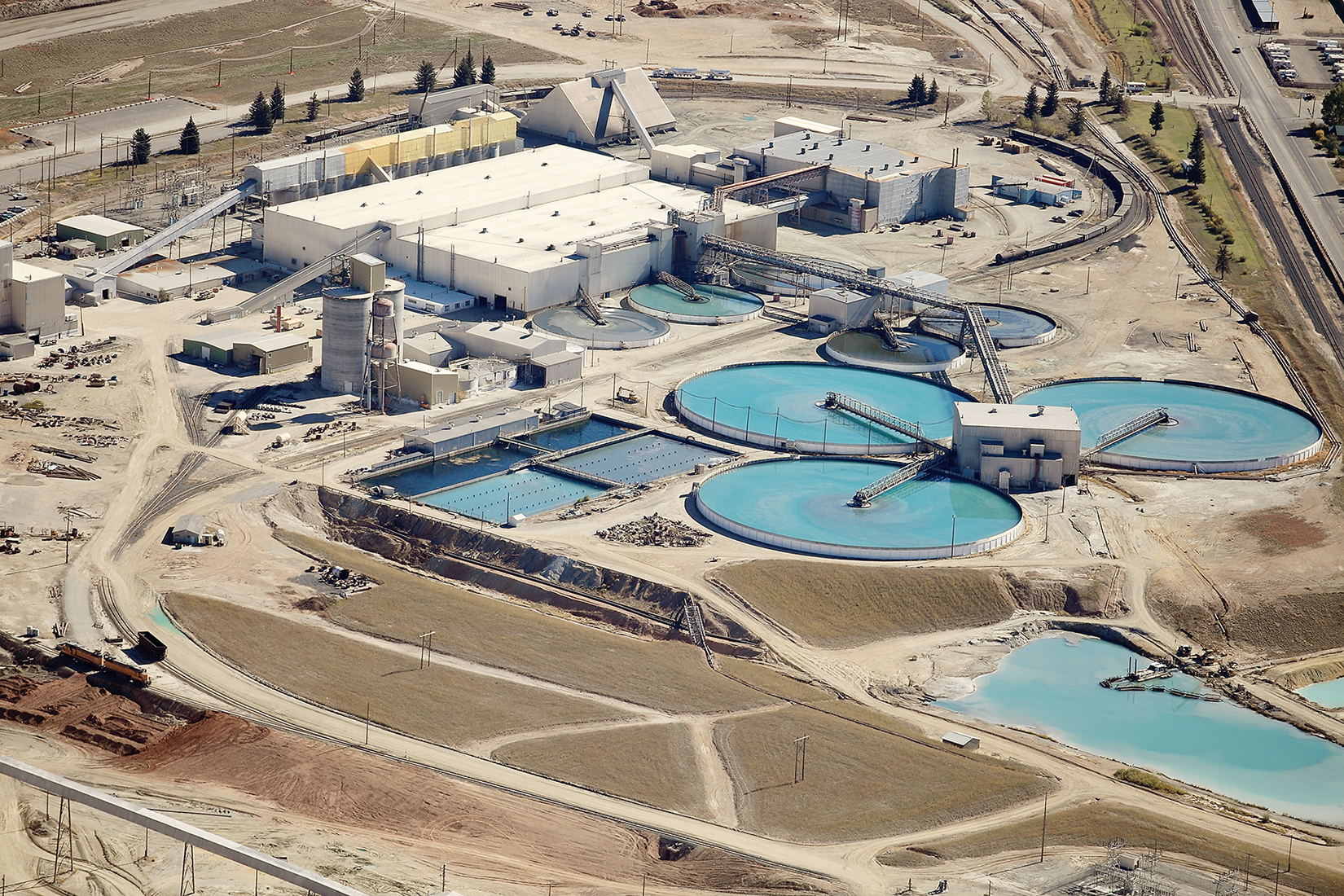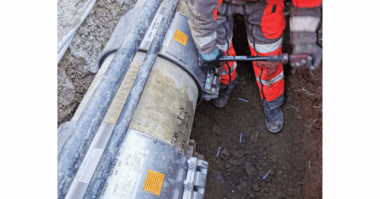 Since the beginning of time, people have had the need to treat the water they consume, and use for cooking, bathing and washing their homes and cooking utensils. They have also needed to find ways to properly treat and dispose of the water that has been fouled through the course of its use—in latter centuries most commonly during industrial production activities. This need helped the water/wastewater-treatment industry grow to $136 billion in revenues in 2011 in the United States, and to an annual rate of growth anywhere between 3.0% and 4.5%.
Since the beginning of time, people have had the need to treat the water they consume, and use for cooking, bathing and washing their homes and cooking utensils. They have also needed to find ways to properly treat and dispose of the water that has been fouled through the course of its use—in latter centuries most commonly during industrial production activities. This need helped the water/wastewater-treatment industry grow to $136 billion in revenues in 2011 in the United States, and to an annual rate of growth anywhere between 3.0% and 4.5%.
When people hear the phrase “water treatment,” however, the first thought that comes to mind is taking water that will be used in domestic settings and removing any impurities, in the process making it safe to drink, cook with, bathe in and wash clothes with; in other words, “municipal” water treatment. But from a broader perspective, the term water treatment can have a number of completely different meanings.
In industrial applications, for instance, water can be taken from a nearby river and used for boiler or cooling-tower makeups. In the oilfield, water that is used or produced during the drilling and recovery process can be treated and sold to farmers for use in field-irrigation activities. In other words, there’s a whole lot of water being treated at all times, and not just so a loving parent can whip up a pitcher of lemonade for the kids.
This white paper will illustrate how an integrated wastewater-treatment system, with many different types of equipment working hand-in-hand—specifically metering and peristaltic (hose) pumps, and polymer makedown systems—can be used in a straight-line treatment process. This will deliver the most cost-effective and efficient way to treat industrial wastewater, all while making it safe for disposal or reuse in any number of additional activities.
The Challenge
Most of the water used or produced in industrial applications contains some level of solid particles. It goes without saying that these particles should not be consumed, but particle-laden water also can’t be used, for example, in a boiler that provides steam to a turbine during power generation, lest the turbine become fouled and damaged.
Recognizing the presence of particulates in water and successfully removing them, however, are two different things. Some of the particles—which can be anything from bacteria and plant material to dirt or minuscule pieces of crushed stone—are so small that their response to gravity is very low. In other words, they don’t fall through water at a consistent rate because their mass is so small and not impacted by gravity. This means that it may take many hours, days or even weeks for the particles to settle as little as a foot. This is an unacceptable, and unpredictable, settling rate for a water or wastewater-treatment system, so the particles need some help in settling or clumping.
To speed along the settling or clumping process, the water-treatment facility must turn to the introduction of a coagulant or flocculant that helps the tiny particles clump together in a mass that is called a “floc,” which is easier to remove. Two of the more popular types of coagulants/flocculants that are used in water/wastewater treatment are:
• Alum. A more economical way to say “hydrated potassium aluminum sulfate,” alum has been used since Roman times to aid in the purification of drinking and industrial-process water. Alum coaxes negatively charged colloidal particles to clump together so they will be able to be more easily removed from settling basins.
• Ferric chloride. Another name for Iron (III) chloride, ferric chloride undergoes hydrolysis when dissolved in water, which gives it the ability to sufficiently form suspended solid particles into flocs.
While quite effective in creating flocs, the flocs that are formed by alum and ferric chloride are held together rather loosely, which means that they can break apart if agitated as they settle in the clarifier or settling basin. Eliminating this break-up potential requires the introduction of a polymer solution that helps form more efficient flocs. The polymer takes the neutralized solid particle clumps and binds them together more tightly.
The clumps that settle in the basin form a material that is called “sludge.” The use of alum by itself leads to the generation of a large amount of sludge; the introduction of polymer helps further coagulate the sludge. However, the sludge that is produced still needs to be removed and disposed of. Accumulated sludge can be collected and sent away to someplace like a centrifuge, or just piled up on the ground outside the water-treatment facility, allowed to dry and then removed via front-end loader and dump truck.
Removing the sludge from the water requires a pump that can run dry and won’t be bothered by abrasive materials. In other words, a pump that has the capability to take whatever flows into it—no matter its makeup—and deliver it out the discharge side in that same form.
The Solution
Industrial water or wastewater treatment, then, is a three-stage process that must work hand-in-hand: initial floc formation with alum and ferric chloride, clump strengthening with polymer, and removal and disposal of the sludge. Not all manufacturers of wastewater-treatment equipment are able to offer full lines of pumping and polymer-blending technology for the required water-treatment applications.
However, Neptune™ Chemical Pump Co., North Wales, PA, USA, a member of Dover Corporation’s Pump Solutions Group (PSG®), Oakbrook Terrace, IL, USA, does feature full lines of pumping and polymer-blending technology for industrial water or wastewater-treatment applications. This allows the water-treatment facility access to a “One Company. One Source.” solution that covers its needs from start to finish. Specific water-treatment technology from Neptune includes:
• Neptune™ 7000 Series Mechanical Metering Pumps. Ideal for dosing alum and ferric chloride, these mechanically actuated pumps eliminate the use of contour plates on the liquid side of the diaphragm, resulting in a simple, straight-through valve and head design that allows improved flow characteristics. They have been designed to handle clear liquids with viscosities ranging from water-like to 5,000 cPs, making them ideal for use in industrial water and wastewater-treatment applications. The capacity of the 7000 Series pumps is manually adjustable via micrometer dial while the pump is running. This allows the pump to produce flow rates ranging from 10 gph to 450 gph (38 L/hr to 1,710 L/hr) at head pressures up to 150 psi (10 bar). The pump’s liquid ends are constructed of PVC, 316 stainless steel or
Kynar. Washdown-duty and explosion-proof motors, as well as variable frequency drive options, are also available. The pumps are also self-priming.
• Fluid Dynamics™ dynaBLEND™ Liquid Polymer Blending Systems. Fluid Dynamics, which is a division of Neptune, has designed the dynaBLEND with a non-mechanical mixing chamber that allows it to deliver an unequalled degree of reliability when activating all types of liquid polymer for use in water or wastewater treatment. The system’s injection check valve has been designed with easy disassembly and inspection in mind, eliminating a maintenance concern that troubles other systems. These features allow the dynaBLEND to apply ultra-high mixing energy at the point of initial polymer and water contact to prevent polymer gelling and agglomeration. The prolonged turbulence that the dynaBLEND process creates allows the polymer to complete the blending process gently and fully. Finally, after the polymer is initially activated, the dynaBLEND’s gentle mixing energy does not break the fragile long polymer chains that have been formed.
• Abaque® Series Peristaltic (Hose) Pumps. Featuring a design that ensures that “whatever goes into the pump comes out of the pump,” Abaque pumps can handle solid particles up to 18 mm (0.7”) and soft particles as large as 31 mm (1.2”), making them a top choice for sludge removal. They feature a seal-free design that eliminates leaks, which enables them to handle the wastewater industry’s toughest pumping applications, from abrasive and aggressive fluids to shear-sensitive and viscous materials. The pumps, which can run in either forward or reverse, are self-priming, dry-running and offer suction-lift capabilities to 9 meters (25.5 feet), as well as the ability to run dry continuously without adversely affecting the pump’s performance. Ductile-iron and steel construction lets the pump produce discharge pressures as high as 16 bar (232 psi). The Abaque’s pump hoses are available in three materials of construction: natural rubber, EPDM and Buna N.
Conclusion
A wide variety of industries use untold millions of gallons of water and produce untold millions of gallons of wastewater each and every day. Properly handling and disposing (or reusing) this wastewater requires a number of stages that must work together seamlessly, from alum and ferric chloride introduction, to polymer injection, to sludge removal. Each stage requires a different type of technology, which can often have the wastewater-plant operator moving in many different directions to identify a solution. Neptune offers a one-stop shop for industrial wastewater treatment, with a ready supply of metering pumps, polymer makedown systems and peristaltic pumps, all of which have been designed to work in hand-in-hand to create the most efficient and cost-effective industrial wastewater-treatment process. Finally, Neptune’s custom skid-fabrication shop can provide any or all of these products as a pre-piped and wired skid-mounted system for ease of installation.
About the Author:
Greg Kriebel is with Fluid Dynamics™, a division of Neptune™ Chemical Pump Co., North Wales, PA, USA. You can contact Mr. Kriebel directly at greg.kriebel@dynablend.com or 215-699-8700, ext. 3361. You can find more information on Fluid Dynamics at www.fluiddynamics1.com. Neptune is an operating company within Pump Solutions Group (PSG®), Oakbrook Terrace, IL, USA. PSG is comprised of several leading pump companies, including Abaque®, Almatec®, Blackmer®, Ebsray, Finder, Griswold™, Maag, Mouvex®, Neptune™, Quattroflow™ and Wilden®. You can find more information on PSG at www.psgdover.com.




